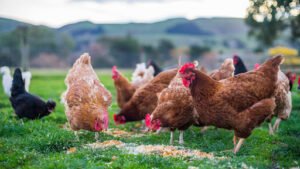Control and diagnosis of mycoplasma in broiler chicken

Dr.Majed Hamid Al-Saegh / Australia
26/6/2024
Control strategies for combating and diagnosing mycoplasma in broiler chicken breeders include:
Biosecurity measures:
- Isolation: Maintaining a closed flock and minimizing the introduction of new birds.
- Sanitation: Regular cleaning and disinfection of housing, equipment and vehicles.
- Visitor Protocols: Limit access to the farm to essential personnel only and enforce strict biosecurity protocols for visitors.
- Rodent and pest control: Implement effective pest control measures to reduce the risk of disease transmission.
Vaccinations :
- Live and inactivated vaccines: Use of vaccines specifically designed for Mycoplasma gallisepticum (MG) and Mycoplasma synovium (MS). Vaccination schedules should be designed based on local epidemiology and herd health status.
- Timing: Ensure that vaccination is performed at the appropriate ages to maximize immunity before exposure.
Management practices:
- All-in-all system: This system is implemented to prevent the spread of infection among different groups of birds.
- Reducing stress: Reducing stress factors such as overcrowding, poor ventilation, and sudden changes in temperature or diet.
Use of antibiotics:
- Strategic management: Use antibiotics judiciously under veterinary supervision to manage mycoplasma infections. Regular monitoring of antibiotic resistance is essential.
- Withdrawal periods: Commitment to withdrawal periods to ensure that poultry products are free of antibiotic residues.

Monitoring and surveillance:
- Regular tests: Conduct regular serological and molecular tests to detect mycoplasma infection early.
- Record keeping: Maintain detailed records of herd health, vaccination and treatment history.
Diagnostic methods:
Serological tests:
- Enzyme-linked immunosorbent assay (ELISA): used to detect antibodies against mycoplasma in poultry serum. It is sensitive and suitable for large-scale screening.
- Rapid serum agglutination (RSA): A rapid test to detect mycoplasma antibodies. It is useful for initial screening but is less specific than ELISA.
Molecular tests:
- Polymerase chain reaction (PCR): A sensitive and highly specific method for detecting mycoplasma DNA in clinical specimens (eg, tracheal swabs and air sac fluids). It can differentiate between MG and MS.
- Real-time PCR: Allows the amount of mycoplasma in samples to be measured, providing insight into the severity of infection.
Culture methods:
- Mycoplasma isolation: involves culturing samples on specific media. Although time consuming, it is definitive for identifying Mycoplasma species.
- Broth and agar media: Specialized media, such as Fry’s broth and agar, are used to culture mycoplasma organisms from clinical specimens.
Histopathology:
- Tissue examination: Microscopic examination of tissues (eg, trachea and air sacs) can reveal characteristic lesions associated with mycoplasma infection.
Immunofluorescence and immunohistochemistry:
- Antigen detection: These techniques use labeled antibodies to detect mycoplasma antigens in tissue samples. Provides specific localization of the pathogen within tissues.
Conclusion:
Effective control and diagnosis of mycoplasma infections in chicken and broiler breeders requires a combination of biosecurity measures, vaccination, strategic use of antibiotics, and regular monitoring. Early diagnosis through serological and molecular tests helps in timely intervention and management, thus reducing the impact



